Media Man
Media Man
New York

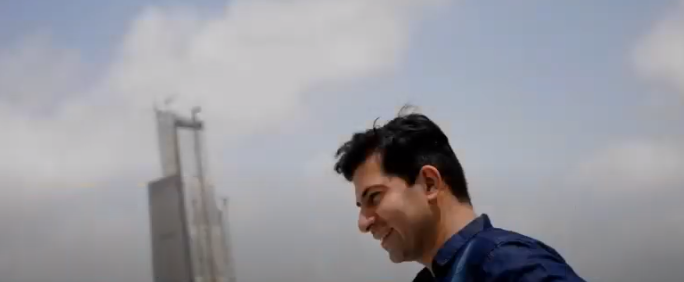
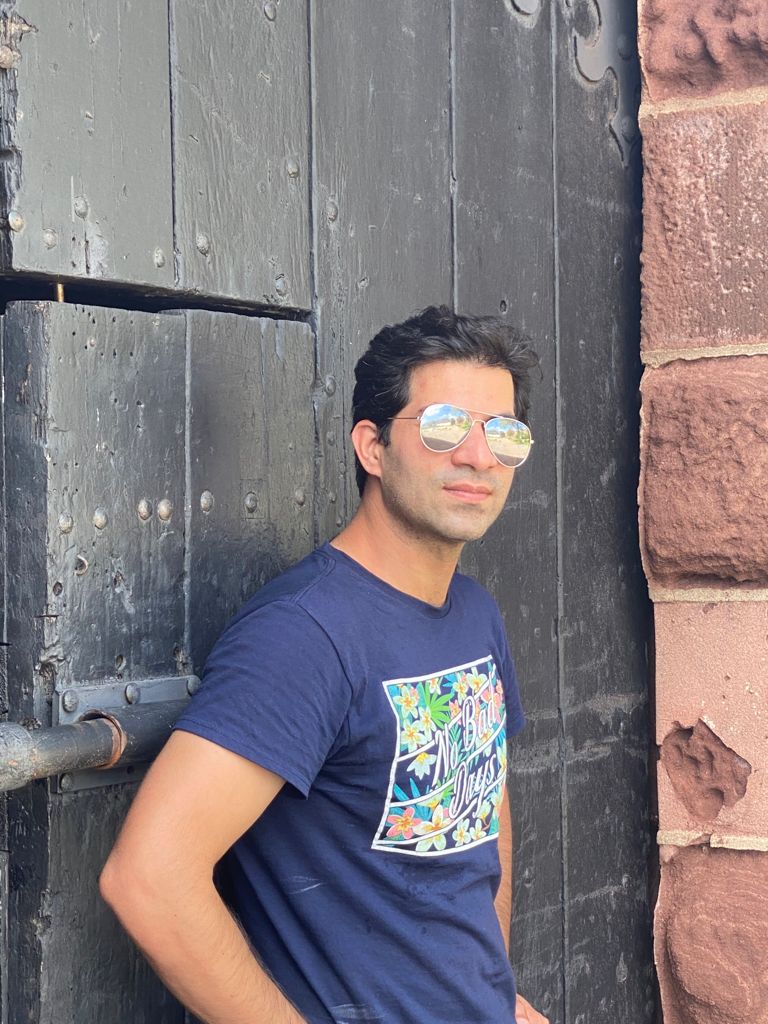
Navigating the City That Never Sleeps: A Guide on How to Travel in New York
By Usman Durrani
10 September 2023
New York, NY – The bustling streets, iconic landmarks, and diverse neighborhoods of New York City make it a dream destination for travelers from around the world. Navigating the city’s intricate transportation system and finding the best ways to get around can be a daunting task for newcomers. In this comprehensive guide, we’ll walk you through how to travel in the city that never sleeps, ensuring you make the most of your Big Apple adventure.
1. Subway System: The Heartbeat of NYC
New York City’s subway system is the backbone of its public transportation network. With 472 stations across four boroughs, it’s one of the largest and most extensive metro systems in the world. To get started, purchase a MetroCard at any subway station, which provides access to buses and subways. Pay-per-ride and unlimited-ride options are available.
2. Buses: A Scenic Option
If you prefer to see the city at a slower pace, hop on a city bus. The MTA operates a vast network of bus routes that connect neighborhoods and destinations not served by the subway. Be sure to check schedules and routes, as traffic can affect travel times.
3. Walking: Explore Up Close
One of the best ways to immerse yourself in the city’s unique neighborhoods is by walking. New York City is incredibly pedestrian-friendly, with well-maintained sidewalks and crosswalks. Plan your itinerary to include leisurely strolls through Central Park, the High Line, and iconic streets like Fifth Avenue and Broadway.
4. Taxis and Rideshares: Convenience at a Price
Yellow taxis are an iconic sight in New York City. They’re readily available, especially in Manhattan. Alternatively, rideshare services like Uber and Lyft are popular and convenient options. Keep in mind that traffic congestion can affect travel times and costs, especially during peak hours.
5. Cycling: Two-Wheeled Freedom
For the adventurous traveler, consider renting a bike. New York City has made great strides in becoming more bike-friendly with dedicated lanes and bike-sharing programs like Citi Bike. It’s an excellent way to explore neighborhoods and parks while getting some exercise.
6. Ferries: Waterway Adventures
With its proximity to water, New York City offers numerous ferry options. The Staten Island Ferry provides breathtaking views of the Statue of Liberty and the Manhattan skyline and is free of charge. You can also take the East River Ferry or explore the city’s waterfront neighborhoods via water taxis.
7. Car Rentals: Not Recommended for Most
While having a car might be practical for some excursions, it’s generally not advisable for navigating the city. Parking can be expensive and scarce, and traffic congestion is a common occurrence. It’s often easier and more cost-effective to rely on public transportation or other options.
8. Tourist Passes: Economical Exploration
Consider purchasing a New York CityPASS or Explorer Pass for discounted access to top attractions and bundled transportation options. These passes can save you money and streamline your travel plans.
9. Navigating the Boroughs: Diverse Experiences
New York City is divided into five boroughs: Manhattan, Brooklyn, Queens, the Bronx, and Staten Island. Each borough offers a unique cultural experience and has its own transportation options. Be sure to explore beyond Manhattan to fully appreciate the city’s diversity.
10. Plan Ahead: Apps and Resources
Finally, make use of technology. Download transportation apps like Citymapper, Transit, and Uber to navigate the city efficiently. Also, consult online resources, city maps, and guidebooks to plan your trip and get insider tips from fellow travelers.
In the city that never sleeps, your transportation choices are as diverse as the experiences you’ll have. From the iconic subway system to leisurely strolls through Central Park, New York City offers countless ways to explore its vibrant streets and neighborhoods. With some planning and a spirit of adventure, you’ll find that traveling in the Big Apple can be an unforgettable journey.
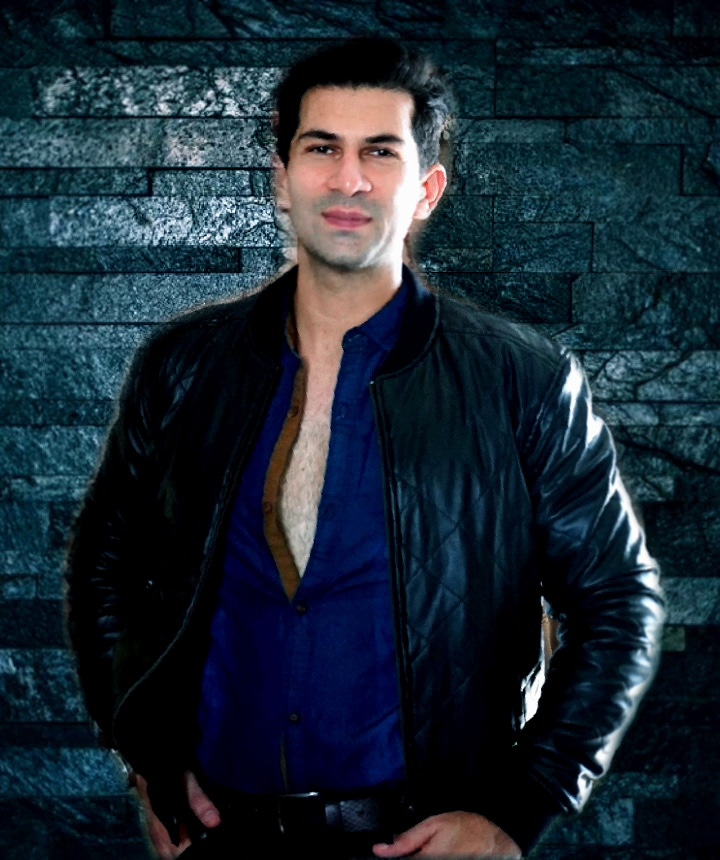
Discover the Best Time to Visit the City That Never Sleeps: New York
New York, NY – September 10, 2023 – New York City, the vibrant metropolis that has captured the hearts of travelers from around the world, is a destination that offers something for everyone year-round. From the iconic skyscrapers of Manhattan to the serene green spaces of Central Park, the city boasts an array of attractions and experiences. But when is the best time to visit the city that never sleeps? Let’s dive into the seasons and events that make each time of the year unique.
Fall – September to November:
The autumn months in New York City are a true visual spectacle. The weather is generally mild, with comfortable temperatures ranging from the mid-60s to the low 70s Fahrenheit (15-24°C). As the leaves change color in Central Park and across the city’s five boroughs, it’s a photographer’s dream. Fall is also an ideal time for cultural enthusiasts, with many museums and theaters offering exciting new exhibitions and shows.
Don’t miss the chance to experience the magic of Halloween in the Village Parade or savor the delectable flavors of the city’s cuisine at the New York City Wine & Food Festival. However, be prepared for some crowds, especially during peak foliage season.
Winter – December to February:
Winter in New York City is synonymous with holiday charm. The city transforms into a winter wonderland, with iconic displays like the Rockefeller Center Christmas Tree and ice skating at Bryant Park and Central Park. The city’s world-class shopping districts, including Fifth Avenue and SoHo, offer unbeatable deals during the holiday season.
While the cold weather might not be for everyone, there’s no denying the charm of New York’s holiday spirit. Just remember to bundle up and bring your warmest winter gear.
Spring – March to May:
As the city thaws out from winter, spring emerges with blooming cherry blossoms in Central Park and a sense of renewal. This is a wonderful time for outdoor activities, like strolling along the High Line or exploring the botanical gardens. Spring is also ideal for those looking to enjoy a quieter and less crowded experience compared to the summer months.
Don’t forget to catch a baseball game at Yankee Stadium or Citi Field as Major League Baseball kicks off its season. Springtime in New York City is characterized by pleasant weather, with temperatures ranging from the mid-50s to mid-60s Fahrenheit (13-18°C).
Summer – June to August:
Summer is the peak tourist season in New York City, and for good reason. The city comes alive with a myriad of events, outdoor concerts, and festivals. Central Park becomes a hub of activity, offering free performances, yoga classes, and picnicking opportunities.
The weather can be hot and humid, with temperatures reaching into the 80s and sometimes 90s Fahrenheit (27-35°C). It’s also when you’ll experience larger crowds and higher accommodation prices. But if you’re willing to brave the heat and crowds, summer in New York City is an unforgettable experience.
The best time to visit New York City largely depends on your personal preferences. Whether you’re seeking the vibrant colors of fall, the holiday magic of winter, the blossoms of spring, or the energy of summer, the city has something to offer year-round. Just be sure to plan ahead and make the most of your visit to the city that never sleeps.
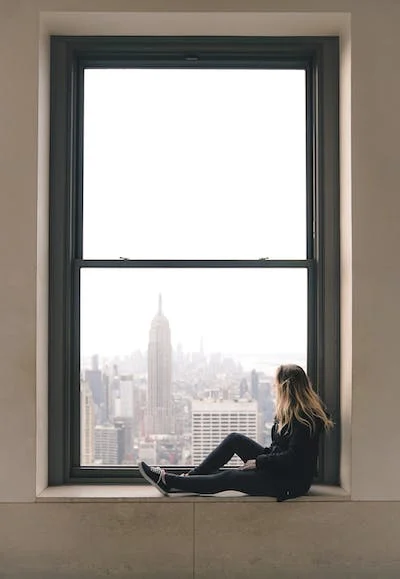
New York Shines Bright: Exploring the Best of the Empire State
From Iconic Landmarks to Culinary Delights, New York Offers Unforgettable Experiences
Date: September 10, 2023
By Usman Durrani
New York, USA – The Empire State, synonymous with sophistication, culture, and vibrancy, has long been a top destination for travelers from around the world. From the bustling streets of New York City to the serene landscapes of Upstate New York, the state offers a diverse range of experiences that cater to every taste and interest. In this guide, we will take you on a journey through the best that New York has to offer, showcasing its iconic landmarks, culinary delights, and cultural treasures.
1. The Big Apple’s Beating Heart
New York City, often referred to as “The Big Apple,” is a metropolis that needs no introduction. Its towering skyscrapers, iconic landmarks, and bustling streets make it one of the most exciting and dynamic cities on the planet. A visit to New York City must include stops at the following landmarks:
2. Culinary Delights
New York is a food lover’s paradise, with diverse cuisines representing cultures from around the world. Here are some culinary highlights:
3. Upstate Escapes
While New York City often takes the spotlight, Upstate New York offers a tranquil retreat for those seeking natural beauty and outdoor adventures. Highlights include:
4. Cultural Gems
New York is home to a rich tapestry of cultures, and its museums and theaters reflect this diversity. Don’t miss:
Whether you’re exploring the concrete jungle of New York City, savoring delectable dishes, immersing yourself in natural wonders upstate, or appreciating the cultural treasures that dot the state, New York offers a diverse range of experiences that will leave you captivated and inspired. So, pack your bags and set off on an adventure to discover the best of the Empire State. New York is waiting to enchant you like never before.
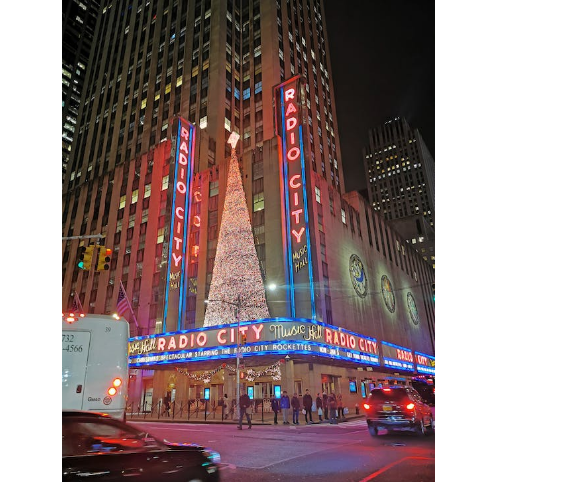
The streets of New York City are a pulsating embodiment of diversity, vitality, and endless possibilities. From the iconic avenues of Manhattan to the vibrant neighborhoods of Brooklyn, Queens, the Bronx, and Staten Island, the streets of New York serve as an urban tapestry that weaves together a rich blend of cultures, experiences, and dreams. In this essay, we will explore the fascinating tapestry of life found in the streets of New York, delving into its bustling energy, architectural marvels, cultural landmarks, and the captivating spirit that makes this city a truly unique and unforgettable place.
The streets of New York City are a living testament to the vibrancy, diversity, and sheer audacity of the human spirit. From its bustling energy and architectural marvels to its cultural landmarks and street art, every corner of the city tells a story. The streets of New York are not just thoroughfares; they are the veins that pulse with the lifeblood of a city that has captivated the world’s imagination for generations. They embody the dreams, aspirations, and resilience of those who walk them, making the streets of New York an emblem of the American Dream itself.
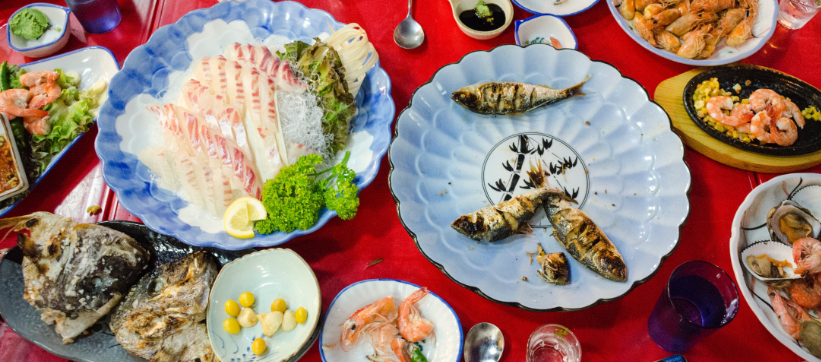
Sea Food in San Francisco
California is well known for its diverse cuisine, including its seafood. With its extensive coastline, California has an abundance of fresh seafood available, and it’s no surprise that seafood dishes are a popular staple of Californian cuisine. In this article, we’ll explore the rich history and variety of seafood in California, as well as some of the most famous and delicious seafood dishes you can try in the Golden State.
Seafood has played an important role in California’s history for thousands of years. The indigenous people of California, including the Chumash, Tongva, and Miwok tribes, relied heavily on seafood as a food source, with shellfish and fish being a staple part of their diet. Spanish explorers also brought new seafood species to California in the 18th century, and the fishing industry quickly became an important part of the state’s economy.
Today, California is home to a wide variety of seafood, ranging from Dungeness crab to sea urchin, from shrimp to salmon. The state’s many fishing ports, including San Francisco, Monterey, and Santa Barbara, provide a constant supply of fresh seafood, which can be found in restaurants and markets throughout the state.
One of the most popular seafood dishes in California is fish tacos. This dish originated in Baja California, just south of the California border, and has since become a favorite across the state. Fish tacos typically consist of battered or grilled fish, cabbage, salsa, and a creamy sauce, all wrapped in a soft tortilla. Some of the best fish tacos in California can be found at taco trucks and beachside stands, as well as in upscale restaurants.
Another popular seafood dish in California is clam chowder. This creamy soup, which originated in New England, has become a staple of California’s seafood cuisine, particularly in the coastal city of San Francisco. Clam chowder is made with clams, potatoes, onions, and cream, and is often served in a sourdough bread bowl. Some of the best clam chowder in California can be found at Fisherman’s Wharf in San Francisco, where it’s been served for over a century.
California is also known for its sushi, which has become increasingly popular in recent years. While traditional Japanese sushi can be found throughout the state, California sushi is a unique fusion of Japanese and American cuisine. California rolls, which consist of avocado, crab meat, and cucumber, are a popular example of California-style sushi. Some of the best sushi in California can be found in Los Angeles, San Francisco, and San Diego.
Seafood lovers in California also have the opportunity to try some more exotic seafood dishes. Sea urchin, also known as uni, is a delicacy in California and can be found in many sushi restaurants. Lobster is another popular seafood in California, particularly in the coastal town of Mendocino, where you can try fresh Maine lobster flown in daily. And if you’re feeling adventurous, you can even try abalone, a type of sea snail that’s considered a delicacy in California.
In addition to its many seafood dishes, California is also home to some of the best seafood festivals in the country. The Dungeness Crab and Seafood Festival in Port Angeles, Washington, is a popular event that celebrates the Pacific Northwest’s seafood bounty, including Dungeness crab, oysters, and clams. The Bodega Bay Fisherman’s Festival in Sonoma County is another popular event, where you can try fresh seafood from local fishermen and enjoy live music and entertainment.
In conclusion, California’s seafood is diverse, delicious, and steeped in history. From fish tacos to clam chowder to sushi, there’s something for every seafood lover in California. Whether you’re a resident or a visitor, be sure to try some or all of available sea food.
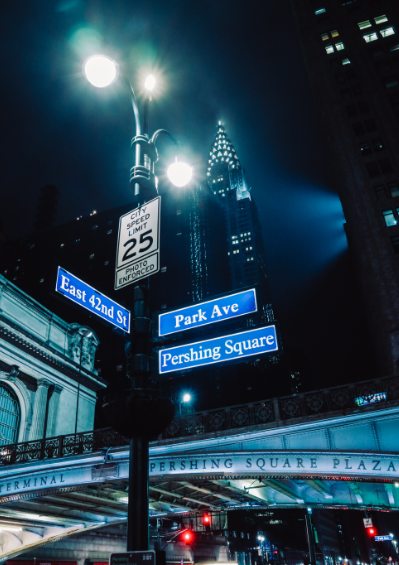
New York City is undoubtedly one of the most vibrant and exciting places in the world. Its streets are always bustling with activity, and there’s never a dull moment. Walking through the streets of New York can be a truly exhilarating experience, full of surprises and unexpected encounters.
As you walk through the city, you’ll see a diverse array of people from all walks of life. You’ll hear dozens of different languages being spoken, and you’ll see people dressed in all sorts of styles, from casual to formal, from bohemian to chic.
The architecture of New York is also a sight to behold. From the towering skyscrapers of Manhattan to the quaint brownstones of Brooklyn, there’s something for everyone. You’ll see classic buildings like the Empire State Building and the Flatiron Building, as well as modern marvels like the One World Trade Center.
One of the things that make New York City so unique is its street art. Graffiti and murals are everywhere, and they add a vibrant and colorful energy to the city’s streets. Some of the best-known street artists in the world got their start in New York, and their work can be seen all over the city.
Another aspect of New York City that’s impossible to miss is the food. The city is famous for its diverse cuisine, and you’ll find everything from hot dogs and pizza to gourmet cuisine from around the world. Whether you’re looking for a quick snack or a fine dining experience, you’re sure to find something that satisfies your taste buds.
As you walk through the streets of New York, you’ll encounter a variety of different neighborhoods, each with its own distinct character. From the trendy shops of SoHo to the bohemian vibe of the East Village, there’s always something new to discover. You’ll see street performers and musicians, and you might even stumble upon a festival or parade.
Of course, no visit to New York would be complete without a walk through Central Park. This massive green space in the heart of the city is an oasis of calm and tranquility amidst the hustle and bustle. You’ll see families picnicking, joggers and cyclists getting in their daily exercise, and tourists taking in the beauty of the park’s lakes, gardens, and sculptures.
One of the best things about walking through the streets of New York is the sense of community you’ll find. Despite being a massive city, there’s a feeling of closeness and connectedness among the people who call New York home. You’ll see neighbors chatting on stoops, friends catching up at cafes, and strangers striking up conversations on the subway.
As you walk through the city, you’ll also encounter a variety of different cultures and traditions. From the Jewish neighborhoods of Brooklyn to the Italian enclaves of the Bronx, the city’s diversity is on full display. You’ll hear different types of music, taste different foods, and see different styles of dress.
One of the most iconic sights in New York is Times Square. This bustling intersection in the heart of Manhattan is famous for its bright lights, billboards, and massive crowds. It’s a true symbol of the city’s energy and vitality, and it’s a must-see for anyone visiting New York for the first time.
As you walk through the streets of New York, you’ll also encounter a rich history that spans centuries. From the Dutch settlers who first established the city to the waves of immigrants who came through Ellis Island, New York has always been a melting pot of cultures and ideas. You’ll see historic landmarks like the Statue of Liberty and the Brooklyn Bridge, as well as lesser-known but equally important sites like the Tenement Museum and the African Burial Ground National Monument.
Walking through the streets of New York is an experience like no other.

Creating a film is a complex and multifaceted endeavor that requires a significant amount of resources, both creative and financial. A film’s budget is an essential component of its production, and it is crucial to allocate resources effectively to bring a story to life. In this article, we will discuss the key elements of film budgets and how they impact the final product.
The Budgeting Process
The budgeting process for film production can be divided into three stages: pre-production, production, and post-production.
Pre-Production
During pre-production, the producer will develop a preliminary budget based on the script and initial plans for the film. This preliminary budget will include the salaries of the cast and crew, location scouting expenses, equipment rentals, and other pre-production costs.
The producer will then work with the director and other key creative personnel to determine the film’s overall look and feel. This process will include storyboarding, set design, and costume design. These creative elements will be incorporated into the budget to ensure that the film’s vision can be achieved within the allocated funds.
Production
Once the pre-production process is complete, the production stage begins. This stage includes all of the actual filming and production of the movie. The largest expenses during this stage are typically the salaries of the cast and crew, equipment rentals, and location expenses.
In addition to these core expenses, there are often unexpected costs that arise during production. These may include unforeseen weather events, production delays, or equipment failures. To account for these expenses, a contingency fund is typically included in the budget.
Post-Production
The final stage of film production is post-production, which includes all of the editing, sound design, and visual effects work. This stage is often the most time-consuming and can be the most expensive, depending on the level of post-production required.
The budget for post-production includes the salaries of the post-production team, editing software and hardware, and any necessary sound design or visual effects work. The budget may also include costs associated with marketing the film, such as creating trailers or promotional materials.
Key Elements of Film Budgets
While each film’s budget will be unique, there are several key elements that are common to most productions. These elements include:
Cast and Crew Salaries: The largest expense in any film budget is typically the salaries of the cast and crew. The more established the talent, the higher the salary. It is important to balance the budget with the level of talent needed to bring the project to life.
Equipment Rentals: Filmmakers must rent or purchase a wide range of equipment, including cameras, lighting, and sound equipment. These costs can add up quickly, and it is important to plan for all necessary equipment in the budget.
Location Expenses: Filming on location can add significant expenses to a film’s budget, including travel and lodging for the cast and crew, permits, and fees associated with filming in certain locations.
Production Design: Creating the look and feel of a film is a crucial aspect of its success. This includes set design, costumes, makeup, and props. The budget must account for all of these expenses, which can be significant depending on the film’s scope and setting.
Post-Production: The final stage of film production, post-production, can be a significant expense. This includes editing, sound design, and visual effects work, as well as any marketing materials needed to promote the film.
Contingency Fund: A contingency fund is included in the budget to account for unexpected expenses that may arise during filming. It is typically a percentage of the overall budget, with 10-15% being a common range.
Tips for Budgeting a Film
Creating a budget for a film is a complex and challenging process. However, there are several tips that can help filmmakers to allocate resources effectively and bring their vision to reality.
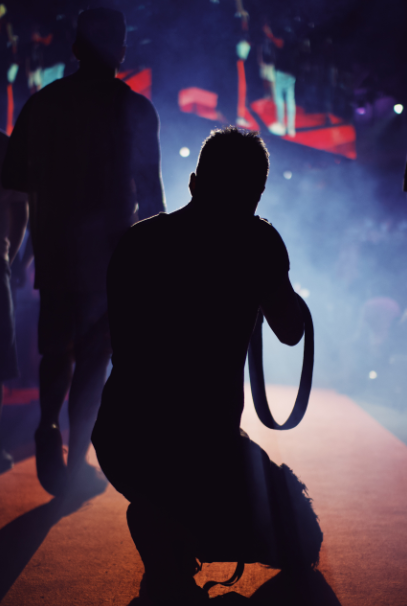
Skills to learn for ?️ film making
Film making is a complex and multifaceted art form that requires a wide range of skills to create compelling and entertaining films. Whether you’re interested in becoming a director, cinematographer, editor, or any other aspect of film production, there are certain skills that are essential to success in the industry. In this article, we’ll explore some of the most important skills for film making and how you can develop them to advance your career.
Storytelling
As a filmmaker, your ability to tell compelling stories is perhaps the most important skill you can possess. This includes not only the ability to craft a strong narrative, but also the ability to develop interesting and believable characters, create engaging dialogue, and build a world that draws the viewer in.
To develop your storytelling skills, start by studying the work of master storytellers in film and other mediums. Read books on the art of storytelling and practice crafting your own stories in written form. Attend film festivals and screenings to get a sense of what makes a great story and what resonates with audiences.
Cinematography
It encompasses everything from camera angles and movements to lighting and color grading. As a filmmaker, your ability to create visually stunning and engaging images is critical to the success of your work.
To develop your cinematography skills, start by learning the basics of camera operation and lighting. Study the work of master cinematographers and pay close attention to how they use camera movement, composition, and lighting to create mood and convey emotion. Experiment with different camera angles and movements to see how they affect the viewer’s perception of the scene.
Editing
It involves everything from cutting and splicing footage to adding music and sound effects. A skilled editor can take raw footage and transform it into a cohesive and compelling story.
To develop your editing skills, start by learning the basics of editing software such as Adobe Premiere or Final Cut Pro. Study the work of master editors and pay attention to how they use cuts, transitions, and pacing to create a sense of tension and drama. Practice editing your own footage to develop your skills and experiment with different techniques.
Directing
Directing is the art of guiding the creative vision of a film from conception to completion. It involves everything from casting actors and working with cinematographers to overseeing the editing process and working with the sound team. A skilled director can bring all of the elements of a film together to create a cohesive and engaging work of art.
To develop your directing skills, start by studying the work of master directors and paying close attention to how they work with actors and collaborate with other members of the production team. Attend film school or take directing courses to gain hands-on experience and develop your craft. Practice directing short films or scenes to hone your skills and experiment with different approaches.
Screenwriting
Screenwriting is the art of crafting a screenplay, or a written script for a film. It involves everything from developing characters and dialogue to creating a narrative structure and pacing the story. A skilled screenwriter can create a compelling story that engages and entertains audiences.
To develop your screenwriting skills, start by reading screenplays for films you admire and analyzing their structure and storytelling techniques. Take screenwriting courses or attend workshops to learn the basics of screenwriting and gain feedback on your work. Practice writing your own screenplays to develop your craft and experiment with different genres and styles.
Sound Design
Sound design is the art of creating and manipulating audio elements in a film, such as dialogue, music, and sound effects. It can greatly enhance the emotional impact of a scene and create a more immersive viewing